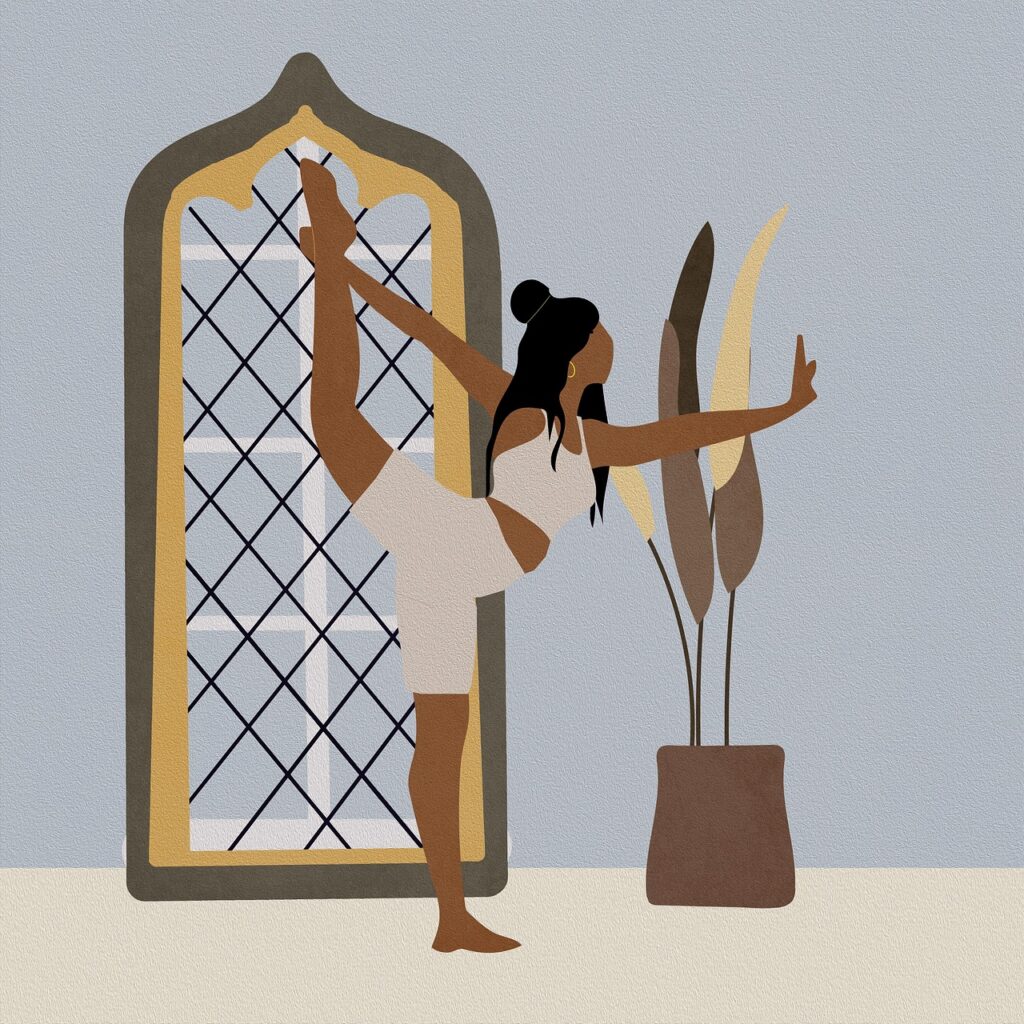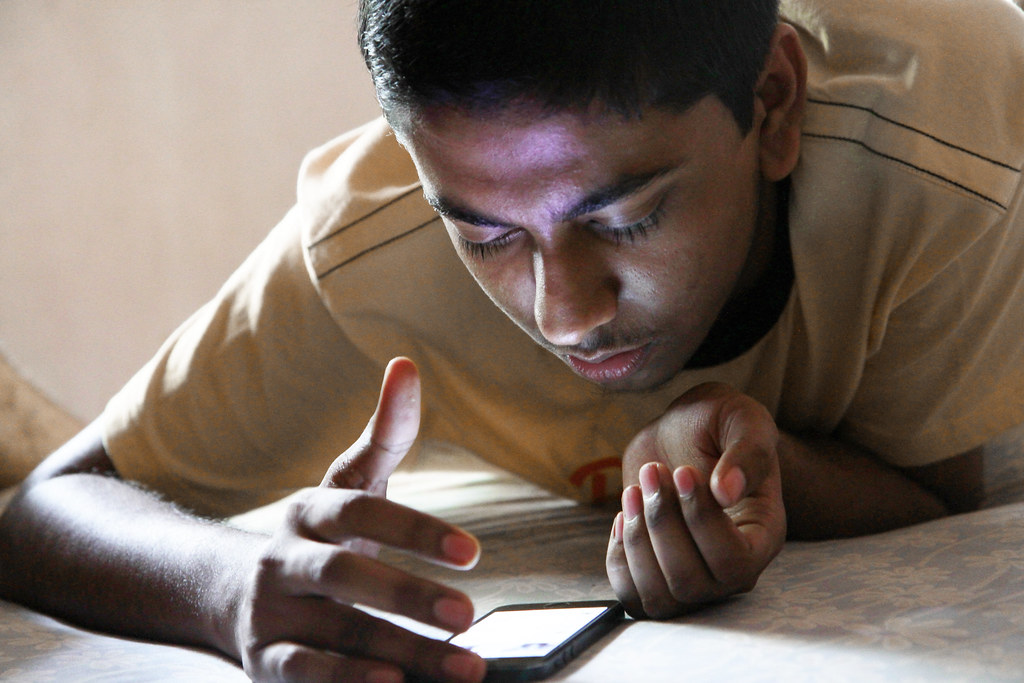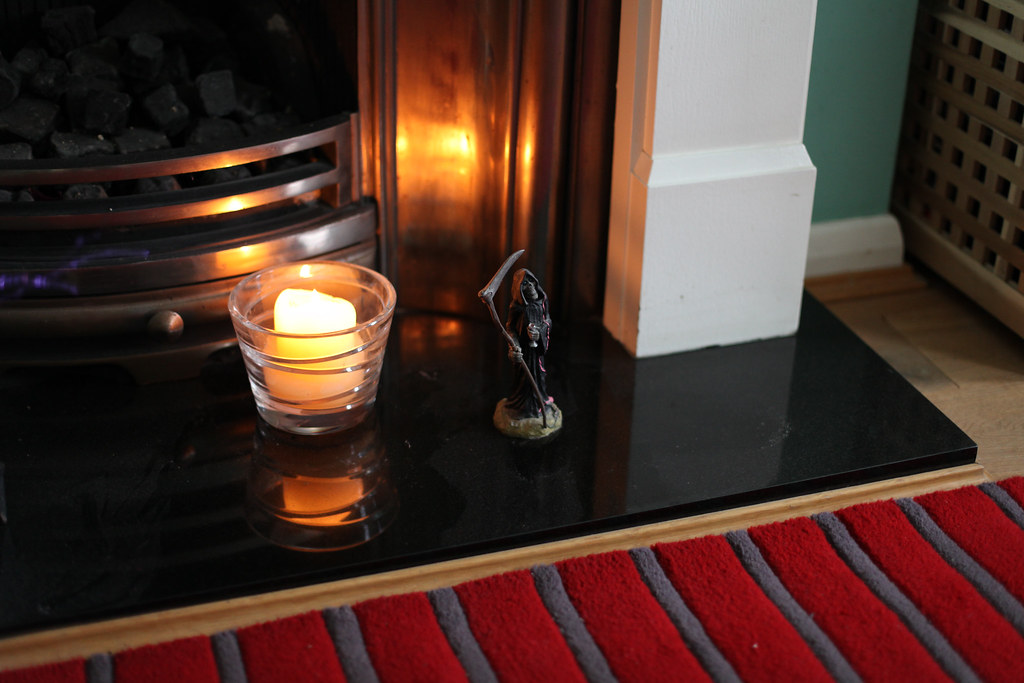
In an increasingly anxious world, marked by rapid news cycles, economic uncertainties, and an endless barrage of digital distractions, the simple act of finding moments of calm presence has become more valuable than ever. It’s a universal human desire to seek solace and clarity amidst the chaos, and for millions of Americans, the answer is increasingly found in the palm of their hand: meditation apps. These digital tools, once considered niche or even a novelty, have quietly become a cornerstone of modern wellness, transforming how individuals approach mental well-being and stress management.
Yet, this phenomenon is not without its paradoxes. While over 300 million people have downloaded meditation apps, only 5 percent stick with them beyond the first month. This startling statistic points to a significant missed opportunity, a challenge that scientists like J. David Creswell, a health psychologist at Carnegie Mellon University, and his colleague Dr. Simon Goldberg have delved into in a scientific review published in American Psychologist. Their work, and broader research, consistently demonstrates that even small doses of app-based mindfulness practice can significantly reduce stress biology, enhance well-being, and help people stay positive under pressure, modestly reducing depression and anxiety symptoms with just brief daily sessions of 5 to 10 minutes.
The widespread adoption and impact of meditation apps are multifaceted, reflecting a convergence of societal needs, technological advancements, and evolving understandings of mental health. From addressing skyrocketing stress levels to making mindfulness accessible to a farmer in rural Nebraska, these applications are fundamentally changing the landscape of self-care. We will explore the key reasons why Americans are turning to these digital sanctuaries, transforming ancient practices into everyday habits for a more balanced and fulfilling life.
1. **Responding to a World of Rising Anxiety**At the core of the meditation app surge lies a profound societal need: the escalating levels of stress and anxiety experienced by millions of Americans. According to the American Psychological Association, stress levels in the U.S. remain alarmingly high, particularly among younger adults. This pervasive sense of unease, fueled by rapid news cycles, economic uncertainties, and the constant digital demands of modern life, creates an urgent demand for effective coping mechanisms. Meditation apps offer a free, accessible, and non-medical pathway to calm the nervous system, providing an immediate and convenient antidote to the daily grind.
The context explicitly states that in an “increasingly anxious world—marked by rapid news cycles, economic uncertainties, and endless digital distractions—finding moments of calm presence is more valuable than ever.” This powerful statement encapsulates the primary driving force behind the turn to meditation apps. Individuals are actively seeking tools to navigate this challenging environment, and the promise of stress reduction is a potent motivator.
Furthermore, research highlights the tangible benefits, showing that “even small doses of app-based mindfulness practice can significantly reduce stress biology, enhance well-being, and help people stay positive under pressure.” This scientific validation reinforces the idea that these apps are not just a temporary fix but a genuine aid in managing the physiological and psychological impacts of stress. For many, the simplicity of opening an app and engaging in a brief guided session offers a much-needed respite from an overwhelming world.
Read more about: Beyond the Hype: 14 Underrated Horror Movies That’ll Blow Your Mind (Seriously!)
2. **The Quest for Mental Clarity and Enhanced Focus**Beyond merely alleviating stress, Americans are increasingly seeking to sharpen their mental faculties and reclaim focus in an age of constant digital fragmentation. The modern landscape is characterized by an incessant stream of notifications, demands for multitasking, and endless opportunities for distraction. In this environment, the ability to concentrate, retain information, and remain present in daily life has become a precious commodity.
Meditation, as facilitated by these apps, trains the brain to focus, offering a structured approach to improving cognitive function. Many users are not just looking to relax; they are actively working to enhance their attention span, improve memory, and cultivate a deeper sense of presence. The practice itself is described as “mental work,” which underscores the active engagement required to achieve these cognitive benefits, much like physical exercise strengthens the body.
As the context notes, “In a world of constant notifications and multitasking, meditation trains the brain to focus.” This direct link between meditation and improved mental clarity resonates deeply with individuals struggling to maintain their attention in a hyper-connected world. Apps provide the guidance and structure necessary to develop these crucial cognitive skills, making the abstract concept of ‘focus’ a tangible, trainable outcome achievable through consistent practice.
Read more about: Unpacking the SUV Safety Debate: What Families Need to Know Beyond the Marketing Hype

3. **Unprecedented Accessibility and On-Demand Convenience**Perhaps one of the most transformative aspects of meditation apps is their ability to democratize access to mindfulness practices, offering unparalleled convenience that fits seamlessly into modern, busy lifestyles. Gone are the days when meditation was perceived as an exclusive practice reserved for remote retreats or specific group sessions. Now, a profound sense of calm is just a tap away, available 24/7, wherever and whenever it’s needed.
This accessibility is vividly illustrated by the example of a “farmer in rural Nebraska not having many available opportunities to go to traditional group-based meditation programs, and now they have an app in their pocket which is available 24/7,” as noted by J. David Creswell. This highlights how apps transcend geographical and logistical barriers, making mindfulness a possibility for anyone, regardless of their location or schedule. It’s a stark contrast to the structured, often inconvenient nature of traditional meditation programs.
The “a la carte nature of meditation through a smartphone app” particularly appeals to those pressed for time or without the budget for in-person coaching. Users can access guided meditations on-demand, transforming mundane moments into opportunities for practice. Creswell himself points out, “Maybe you’re waiting in line at Starbucks, and you’ve got three minutes to do a brief check-in mindfulness training practice.” This speaks volumes about how apps integrate into the fabric of daily life, making mindfulness an adaptable, personalized experience rather than a rigid commitment.
Read more about: Mastering Mealtime: A Wirecutter Guide to the Fastest and Best Food Delivery Apps of 2025
4. **Backed by Science: Credibility Through Research**In an age that values evidence-based solutions, the scientific credibility underpinning meditation apps has been a significant driver of their widespread adoption. Americans are increasingly looking for practices supported by rigorous research, and mindfulness meditation has accumulated a substantial body of scientific evidence demonstrating its efficacy for both mental and physical health. This scientific foundation moves meditation beyond mere spiritual or anecdotal claims, presenting it as a legitimate and effective health intervention.
Research from Harvard Medical School, for instance, shows that mindfulness meditation can “reduce symptoms of anxiety and depression, improve emotional regulation, enhance immune function, [and] increase gray matter density in brain regions associated with memory and learning.” Neuroscientist Dr. Sara Lazar explicitly states, “Meditation can literally change your brain. It’s like exercise for your mind.” This kind of tangible evidence appeals directly to a science-minded populace, reassuring them that their investment in these practices yields measurable, biological benefits.
The work of Creswell and Goldberg, published in American Psychologist, further solidifies this scientific backing, detailing how app-based practices can “modestly reduce depression and anxiety symptoms” and significantly impact “stress biology.” Furthermore, studies reveal that meditation apps can “lower blood pressure, ease repetitive negative thinking and even influence gene expression related to inflammation.” This robust body of research transforms meditation from an abstract concept into a practical tool, building trust and encouraging consistent engagement among users seeking proven pathways to wellness.

5. **Aligning with the Holistic Health and Wellness Movement**The burgeoning interest in meditation apps is also deeply intertwined with a broader cultural shift towards holistic health and wellness in America. Wellness is no longer solely defined by physical fitness but encompasses mental, emotional, and spiritual well-being. This comprehensive view of health recognizes the interconnectedness of these dimensions, and meditation, with its capacity to nurture all of them, fits perfectly into this evolving paradigm.
Meditation serves as a bridge across these dimensions, offering a practice that inherently integrates mind and body. It’s not just about managing symptoms but about cultivating a deeper, more profound sense of balance and inner peace. The cultural shift means that individuals are seeking practices that support their entire being, recognizing that true health extends beyond the absence of illness to include a vibrant, engaged presence in life.
As the context highlights, “Wellness in the U.S. is no longer just about physical fitness. Americans increasingly value mental, emotional, and spiritual health. Meditation bridges these dimensions, making it a natural fit for the wellness movement.” This emphasis on a comprehensive approach to health empowers individuals to take proactive steps towards their well-being, with meditation apps providing an accessible entry point into this holistic journey. It represents a conscious decision by many Americans to invest in their overall vitality, not just their physical appearance or disease prevention.
Read more about: Oprah Winfrey Looks Nearly Unrecognizable: Inside Her Incredible 50-Pound Weight Loss Journey and Candid GLP-1 Revelation

6. **Low Barrier to Entry: Starting Small and Building Habits**One of the critical factors in attracting and retaining initial users of meditation apps is the low barrier to entry and the emphasis on starting with very brief, manageable sessions. This approach directly addresses common deterrents, such as the perception that meditation requires significant time commitments or a specialized environment. By making the initial steps incredibly easy, apps encourage experimentation and facilitate the crucial process of habit formation.
Research on habit formation strongly supports the idea of beginning with “very brief training sessions,” as it “reduces the mental barrier of thoughts like ‘I need 30 minutes for this.’” The recommendation is to “figure out the amount of practice you are actually willing to do—maybe it’s 1 to 5 minutes—and try that.” This pragmatic advice empowers individuals to begin without feeling overwhelmed, transforming a potentially daunting practice into an achievable daily act. Even scientific research suggests that “small training doses of mindfulness meditation deliver health benefits,” reinforcing the value of these short sessions.
This ‘start small’ philosophy is foundational to integrating meditation into busy lives. By encouraging users to celebrate these small wins and gradually experiment with increasing practice minutes, apps help build momentum and foster a sustainable routine. The accessibility of a 5-minute guided session makes meditation feel less like an intimidating spiritual discipline and more like a practical, everyday tool, much like drinking a glass of water or taking a short walk. This iterative approach to building a practice is key to turning initial interest into a lasting habit.

7. **Reducing Barriers for Diverse and Underserved Populations**Meditation apps are playing a particularly significant role in extending the reach of mental health support to diverse and historically underserved populations. The traditional landscape of mental health services often presents numerous barriers, including issues of transportation, time constraints, cost, and the persistent stigma associated with seeking professional help. Digital tools, and meditation apps specifically, offer a potent solution by mitigating many of these obstacles, thereby expanding access in a meaningful way.
An “intriguing finding” from research indicated a “pattern of increased concerns regarding meditation apps among lifetime meditation app users,” yet when examining active app users (weekly or daily), a different picture emerged. Active users were found to be “less likely to be men, have a low income, and be non-Latinx White individuals.” This counter-intuitive finding is particularly significant because it suggests that “higher active use of meditation apps among racial and ethnic minority participants supports the notion that meditation apps, along with other technology-based interventions, may reduce barriers to use (eg, transportation, time, cost, and stigma).”
This means that for populations who traditionally face greater hurdles in accessing mental health care, meditation apps serve as a vital entry point. The privacy of an app, the reduced cost compared to therapy, and the flexibility of on-demand access make mindfulness practices attainable for individuals who might otherwise be excluded. By democratizing access to practices that promote well-being, these apps are not only attracting users but are also fostering a more inclusive and equitable mental health landscape in America, reflecting a powerful societal benefit beyond individual stress relief.
Read more about: The Science of Speed: Unveiling How Just 15 Minutes of Fast Walking Each Day Can Add Years to Your Life

8. **Driving New Research and Scientific Opportunities**The rise of meditation apps has not only revolutionized personal well-being but also opened unprecedented avenues for scientific research, allowing for studies on a scale previously unimaginable. These digital platforms provide scientists with unique opportunities to gather data from vast populations, moving beyond the traditional constraints of laboratory-based investigations. This new era of research promises to deepen our understanding of mindfulness and its effects in diverse, real-world settings.
J. David Creswell, a health psychologist at Carnegie Mellon University, eloquently highlights this shift. He remarked on the potential to scale up research, stating, “Historically, I might bring 300 IBS patients into my lab and study the impacts of meditation on pain management. But now I’m thinking, how do we harness the capacity of meditation apps and wearable health sensors to study 30,000 irritable bowel syndrome patients across the world?” This vision underscores the transformative power of apps in accelerating scientific discovery and validation.
Furthermore, the integration of meditation apps with wearable health sensors, such as Fitbit and Apple Watch, represents a significant leap forward. These devices track crucial biometric data, including heart rate and sleep patterns, allowing for the incorporation of physiological responses directly into meditation practices. This capacity to collect real-time biometric information offers an intricate, objective layer of data, enhancing the precision and depth of research into the mind-body connection.
The ability to study large, geographically dispersed groups and integrate biometric feedback means researchers can explore nuances of meditation practice, engagement, and outcomes that were once out of reach. This dynamic intersection of technology and science is poised to generate richer insights into who benefits most from meditation, under what conditions, and with what specific physiological impacts, propelling the field of mindfulness research into a new frontier.
Read more about: Unveiling the Future: Life Aboard the USS Gerald R. Ford, the World’s Largest Aircraft Carrier

9. **The Dominance and Disruptive Nature of the Meditation App Market**Meditation apps have ascended to a position of remarkable dominance within the broader mental health app ecosystem, fundamentally reshaping how mindfulness practices are disseminated to the general public. Their immense popularity signifies a disruptive force, challenging traditional models of mental wellness and establishing a “new normal” for engagement with mental health tools. This market influence is not merely a trend but a foundational shift in how individuals seek and receive support for their mental well-being.
Statistical evidence vividly illustrates this market leadership: meditation apps account for a staggering 96% of overall users in the mental health app marketplace. This figure, as cited by Creswell, underscores their unparalleled reach and adoption. He emphasizes this point, stating, “Meditation apps dominate the mental health app market. And this paper is really the first to lay out the new normal and challenge researchers and tech developers to think in new ways about the disruptive nature of these apps and their reach.”
The success of commercial giants like Calm and Headspace, which have garnered millions of users daily and contributed to over 300 million downloads for the top 10 apps, exemplifies this market dynamism. These platforms have not only engaged millions but have also created a vibrant commercial landscape that attracts continuous innovation and investment. This commercial popularity demonstrates a clear and sustained demand from the public for accessible, digital mindfulness solutions.
Beyond sheer numbers, this market dominance highlights a significant transition in consumer behavior. People are actively choosing digital tools for mental health support, often as a primary entry point to mindfulness. This widespread preference for app-based solutions necessitates a re-evaluation by researchers and developers alike, prompting them to consider the unique opportunities and challenges presented by this prevalent form of mental wellness intervention.

10. **The Promise of Personalization through AI and Data**As meditation apps continue their rapid evolution, a significant frontier lies in the integration of artificial intelligence (AI) and advanced data analytics to deliver highly personalized user experiences. The current landscape often provides a more generalized approach, but the future promises tailored sessions that adapt dynamically to individual needs, preferences, and even real-time biometric data. This move towards hyper-personalization is set to make mindfulness practice even more effective and engaging for a diverse user base.
J. David Creswell envisions a future where “AI, such as meditation-guiding chatbots, will only become more common,” offering a level of personalization previously unattainable. This marks a pivotal development, shifting from “one-size-fits-all group classes to training sessions tailored to the individual.” Such bespoke guidance can significantly enhance the efficacy of practice, addressing the specific nuances of each person’s journey.
The need for this individualized approach is clear, as Creswell points out: “People use meditation for different things, and there’s a big difference between someone looking to optimize their free-throw shooting performance and someone trying to alleviate chronic pain.” AI-driven systems can discern these varied motivations and goals, then curate content, pacing, and feedback that are precisely aligned with the user’s objectives, whether they are an Olympic athlete or someone grappling with chronic health issues.
Moreover, the ability to incorporate biometric data from wearable devices, as discussed earlier, will further enrich this personalization. An app could, for instance, adjust a guided meditation based on a user’s current heart rate or sleep patterns, providing interventions that are contextually relevant and maximally beneficial. This convergence of AI, biometrics, and user goals represents a powerful leap towards a truly adaptive and responsive meditation experience, ensuring that each session is uniquely optimized for the individual.
Read more about: Navigating the Electric Future: Our Expert Picks for the Top 12 EVs You Can Buy Right Now
11. **Addressing the Engagement Challenge**Despite the remarkable popularity and scientific validation of meditation apps, a critical “elephant in the room” remains: the significant challenge of user engagement and retention. While millions download these tools with good intentions, the vast majority abandon them quickly, pointing to a widespread missed opportunity. Understanding and overcoming this hurdle is paramount for the long-term success and impact of the meditation app industry.
The statistics are indeed sobering, as Creswell notes: “Ninety-five percent of participants who download a meditation app aren’t using it after 30 days.” This high attrition rate is not unique to meditation apps but is particularly pronounced, signaling a need for innovative strategies to keep users invested beyond the initial novelty. Without sustained engagement, the potential for long-term health benefits, even from short daily sessions, remains largely untapped for many.
The context also provides insights into why engagement falters, suggesting that many apps “offer guided sessions that quickly feel repetitive, provide little personalization or real-time support, and rarely give feedback on your progress.” These shortcomings directly impact a user’s motivation and sense of progress, leading them to disengage. To combat this, the industry needs to learn from successful models, like language-learning apps such as Duolingo, which excel at maintaining user interest through gamification, personalized pathways, and consistent positive reinforcement.
Building streaks, creating reminders, and offering intentional rewards are practical strategies highlighted in the context to foster consistent use. Creswell encourages users to “celebrate the small win and experiment with increasing practice minutes.” The key lies in transforming meditation from a perceived chore into a reinforcing habit, by offering varied content, responsive support, and clear indicators of progress, making the journey intrinsically rewarding and overcoming the initial barriers to sustained practice.
Read more about: Unveiling the Future: Life Aboard the USS Gerald R. Ford, the World’s Largest Aircraft Carrier
12. **Integrating Mindfulness into Everyday Life and Institutions**Beyond individual adoption, the meditation app boom signifies a broader cultural shift, wherein mindfulness is increasingly integrated into the fabric of everyday American life and institutional settings. What was once considered a niche or spiritual practice is now becoming a practical tool embraced by schools, workplaces, and healthcare providers, transforming from an exotic concept into an essential component of collective well-being.
This institutional integration extends the reach and impact of mindfulness far beyond the individual user’s smartphone. In schools, for instance, “some classrooms begin the day with breathing exercises instead of announcements,” with research showing benefits for emotional regulation and academic performance. Workplaces are similarly adopting mindfulness, offering “sessions during lunch breaks or build meditation into wellness benefits,” leading to higher productivity and reduced burnout among employees.
Healthcare settings also actively leverage mindfulness programs to assist patients in managing chronic pain, recovering from addiction, or coping with serious illnesses. This widespread institutional embrace solidifies mindfulness’s role as a legitimate and effective intervention across various sectors. The shift reflects a societal recognition that these practices offer tangible benefits not just for personal peace but for collective resilience and functioning.
The ease of access provided by apps plays a crucial role in supporting this integration. While institutions might offer structured programs, apps provide a continuous, personal resource that reinforces these initiatives. The cultural journey of mindfulness from the esoteric to the essential demonstrates a deep-seated societal need for tools that help navigate modern challenges, making it a permanent fixture in America’s wellness culture.

13. **Meditation Apps as a Gateway to Deeper Practice**For many Americans, meditation apps serve as an invaluable entry point into the practice of mindfulness, acting as a gentle “first step” that demystifies ancient traditions and makes them approachable. In a world where traditional meditation might seem intimidating or inaccessible, these digital tools offer a low-stakes opportunity to “dip their toes in” and begin cultivating mindfulness skills, often paving the way for a deeper, more sustained engagement with the practice.
J. David Creswell articulates this perfectly: “I don’t think there is ever going to be a complete replacement for a good, in-person meditation group or teacher. But I think meditation apps are a great first step for anyone who wants to dip their toes in and start training up their mindfulness skills.” This perspective positions apps not as a substitute for traditional learning but as a complementary, foundational tool, especially for beginners. They bridge the gap between initial curiosity and committed practice.
The “a la carte nature of meditation through a smartphone app” particularly caters to individuals who might be hesitant to commit to structured, in-person programs due to time constraints, financial considerations, or a lack of local opportunities. Apps provide a safe, private space to explore guided meditations, allowing users to build confidence and understanding at their own pace, transforming a potentially daunting discipline into an accessible daily habit.
This initial exposure through apps often leads to users seeking more advanced forms of practice, whether through longer sessions, exploring different meditation styles, or eventually joining in-person groups or retreats. By making the initial journey inviting and manageable, meditation apps play a vital role in broadening the base of mindfulness practitioners, fostering a larger community of individuals dedicated to cultivating inner peace and well-being.

14. **Responding to Societal Suffering and Fostering Widespread Well-being**Ultimately, the surging popularity of meditation apps in America is a profound response to a world grappling with immense societal suffering, characterized by “unbelievably high levels of stress and loneliness.” These digital tools hold “tremendous potential to help” address these pervasive issues, extending beyond individual self-care to contribute to a broader societal transformation towards greater well-being and resilience.
The core motivation for this widespread adoption lies in the collective human desire to find calm amidst chaos. Meditation apps offer a tangible and immediate solution for individuals to manage their stress, enhance emotional regulation, and cultivate a sense of presence in their lives. This individual benefit, when multiplied across millions of users, translates into a significant positive impact on public mental health and overall societal functioning.
Beyond symptom relief, the broader implications of widespread mindfulness practice are far-reaching. The context mentions its potential for “fostering empathy in communities to reducing conflict on a global scale.” While ambitious, this vision underscores the transformative power of a more mindful populace — individuals who are better equipped to navigate challenges with greater ease, kindness, and compassion, leading to more harmonious interactions and communities.
As a cultural shift, the embrace of mindfulness, facilitated by accessible apps, is not just about personal peace; it’s about collectively building a more balanced, compassionate, and resilient society. By offering a readily available pathway to inner stillness, these apps empower millions to reclaim their mental and emotional equilibrium, ultimately contributing to a more wholesome and fulfilling life for individuals and the nation as a whole.
The American journey into meditation apps is far more than a fleeting wellness trend; it is a vital adaptation to the demands of modern life. From addressing the acute pangs of anxiety and the relentless quest for focus, to leveraging scientific validation and embracing holistic health, these digital sanctuaries have woven themselves into the fabric of daily routines. They have broken down barriers of access, cultivated new research frontiers, and promised a future of unprecedented personalization, all while directly confronting the challenges of engagement.
These apps serve as both a crucial first step and a sustained companion on the path to mindfulness, helping millions navigate an increasingly complex world. They are a testament to the enduring human need for stillness, clarity, and connection in an age of constant flux. As technology continues to evolve, so too will the potential for these tools to foster not just individual peace, but a broader, more compassionate, and resilient American society. The quiet revolution of the meditation app is here to stay, reshaping how we care for our minds, one mindful moment at a time.







